Sociology and Criminology-Open Access
Open Access
ISSN: 2375-4435
ISSN: 2375-4435
Research Article - (2019)Volume 7, Issue 1
Pottery production, like many other forms of indigenous technology, has responded to the domestic and commercial aspirations of the Ushafa people and has affected their personal and corporate economy for centuries now. This study attempts a criminological exploration of the nexus between craftsmanship, economic empowerment and reduction in crime rate. Surveyed samples were drawn from Ushafa community and Ushafa pottery Centre Abuja. The study was aimed at assessing the contribution of the pottery center to the Ushafa rural economy in terms of employment potentials and reduction in crime rate. Results confirmed that the pottery center has indeed impacted positively on the lives of those engaged in it. It was also noted from the result that as more youth are engaged in the pottery craftsmanship, crime rate correspondingly drops. It is thus recommended that the pottery center be upgraded to serve a wider range of beneficiaries. The Government, the security institutions and policy makers are also called upon to retool in order to strategically check youth criminality via productive engagements. Finally, it is hoped that should the center deploy the uniqueness of product and aesthetic upgrading suggested in this study, the income potentials of potters would be enhanced.
Craftsmanship; Creative employment; Rural economy; Youth criminality
The level of youth unemployment is increasingly becoming unbearable. Kazeem [1] reports that Nigeria has become host to the largest poor segments globally. It is estimated that a whopping 86.9% of Nigerians live below poverty line, 50% of these very poor citizens are said to be the youth [2]. Kpakol attributed this to unemployment. This corroborates the SDG’s (2018) concerns that the goal of ending poverty by 2030 may not be realizable owing to Nigeria’s current ranking as the world’s center for the poorest poor. Youth criminality on the other hand is alarming, threatening the very fabric of society as more and more youth are daily engaged in armed banditry across the Nigerian state. In the many concerted efforts have been experimented to reduce unemployment and thereby check criminality, but it appears the twin evils of unemployment and criminality, still subsist unabated.
Ushafa Pottery Centre came on stream by the efforts of the Late Mrs. Mariam Babangida in 1989. This was in line with the design of the Better Life for Rural Women Programme aimed at uplifting the living standards of the rural women through small scale enterprises [3]. Initially it was established to meet the skills acquisition needs, as well as double as a tourist destination for visitors and residents of Abuja, and other stakeholders. In recent times, many young school leavers are said to be patronizing the Centre to learn the pottery skills and make brisk business thereby.
Crime causation primarily results from a combination of multiple adverse environmental situations which among others may include socio-economic, cultural and family conditions [4]. Against this backdrop, Aliyu cited in Inyang and Agwadu asserted that due to the abysmal failure of Government poverty alleviation programmes, crime rate at the rural areas have increased. There is a connection between community needs assessment and community development programmes. In the light of the foregone, one could submit that policies of Government targeted at community development may have failed because they have been structured against the needs of particular communities. This study investigates the possibility of traditional architecture like pottery making serving as a veritable turning point in the fight against unemployment and youth criminality, especially among the rural poor.
Conceptualizing creative employment, rural economy and youth criminality
Creative employment: The concept of employment has a rampant understanding among everyday users. However, scholars have given varying definitions owing their scholarly leaning [5,6]. In the broadest sense of the word, it refers to the engagement in paid activity. This could be private or public. It is synonymous with wage-earning duties or services.
Creative employment therefore implies a situation in which the employer is engaged in the application of practical knowledge for the performance of productive work, resulting in the creation of visual and/or tangible objects or artifacts. Creative employment is estimated to account for a huge percentage of our GDP [7], as the entertainment industry in Nigeria is said to be the highest foreign exchange earner beside oil and gas [8].
Rural economy: A vast majority of Africa’s very poor live in the rural areas. Many of the prerequisite for a better and healthy living standard are remote from most rural communities in Nigeria. These may include factors such as potable water, electricity supply, good and affordable health care facilities, functional educational infrastructure, motorable road network, an efficient modern transportation system, good and affordable housing and financial institutions among others. The near absence of these in the opinion of Igbolo and Adaka [9], has resulted in rural-urban migratory trends across Nigeria, and continues to sue for upsurge of crime rate in Nigeria. As we grapple with the complex and multidimensional development predicament and past failures as they affect rural economy, the need for a rethink of what constitutes meaningful National development and in particular rural development is not only necessary but imperative [10]. There is therefore a critical need to reflect and focus on options yet untried in our development strategies within the context of current development paradigm. A retool option stirs us in the face for rural economic recovery and crime reduction.
Youth criminality: Youth criminality is a recurring decimal that has no National or International boundaries. Crimes like mobile snatching, pick pocketing and armed banditry among others are often perpetrated by or with the active involvement of youth. These are crimes of various degrees and involving the deployment of various lethal tools and weaponry. Shuja [4] argues that to fight crime, the youth must feature prominently in the target population. Scholars have articulated ways and approaches to fight youth crime in the past, including the engagement of youth in gainful employment [11-13], not much have been said about specific form of employment approach to be developed. This study believes that to score a lasting point in effort to dissuade the Ushafa youth away from criminality and reduce unemployment, concerted investment must be made to engage them in pottery craftmanship.
Research questions
This research poses two basic questions:
What are the contributions of pottery making craftmanship to economic empowerment in Ushafa community?
Can pottery craftmanship be used to curb crime rate in Ushafa community?
Study objectives
The major objective of the study was to explore the nexus between craftmanship, economic empowerment and reduction in crime rate. Two broad objectives were drawn from the main:
• To assess the contribution of pottery making craftmanship to economic empowerment in Ushafa community and
• To determine the possibility or otherwise, of crime reduction through pottery craftmanship in Ushafa community.
Significance of the study
This research is a deliberate attempt to reawaken public consciousness to the fact that indeed crime control can be achieved through creative employment. The strategy is using pottery craftmanship to create economic empowerment thereby leading to reduction in crime rate in Ushafa community. The research is also intended to assist stake holders in their effort at formulating policies or reviewing existing crime-related policies that would help check criminality in Ushafa community and environs, guarantee increased economic empowerment for the rural Ushafa community folks. The findings and recommendations of this work will help Government in designing programmes that will help to reform and reorient the youth towards effective contribution to Nation building. This research would be useful in furthering knowledge in the area of the fight against crime and criminality in society.
Art in different forms has led African civilization over many centuries. In fact, art can be viewed as that which distinguishes one culture from the other. For instance, Aiyedun believes that pottery can serve the purposes of understanding culture sequence, define regional groupings, and throw light on commercial production, trade and past ways of life.
Pottery production is known to play very vital roles in most rural economies in Nigeria and elsewhere. In their separate study, Samuel [14] asserted that art in Africa has always accompanied the people’s life, manifest in every aspect of their work, play and behavior. It is concluded that pottery making craftmanship mirrors the society from many generations gone by. Products from pottery making range from household wares to community artifacts. Arguing in support of this, Samuel [14] observed that most women, where the art is predominant diligently, followed the pursuit which custom has allotted them. They also make all the native earthenware and many other things used in the country. Also, Leka pointed out that rural women play key roles in income generation in their families through petty businesses such as pottery-making and merchandizing. Besides serving as an income earner for the rural potters, Aiyedun [15] identifies some of the advantages of pottery to rural economy to include availability of household and commercial wares used by community folks. These include brewing pots, storage pots, cooking pots ritual pots, ornamented pots and ceremonial pots. These unarguably serve various purposes which add value to the rural economy. This study believes that this legacy can be tapped to enhance the commercial value of the art, as well as help curb crime rate.
Crime rate and employment
Unemployment and poverty are said to both precipitate a miasma of socio-economic maladies such as security, leadership and governance etc. [2]. However, unemployment in the definition by the International Labour Organization (ILO) (1982) is believed to be created in part, by the rate of urbanization of the youth. This is so because, as Chunwate et al. [16] noted, development breeds urbanization which leads to increased youth criminality in the urban centers.
Admissibly, youth unemployment is hinged, in the opinion of Oduwole [2], on the near absence of employable skills due to inappropriate school curricula. Analysts say a large number of those who bestride the labour market in Nigeria generally are bereft of the skills that match the needs and demands of employers. The trio affirmed that the education system in Nigeria has its liberal bias which indeed over supplies the labour market with graduates with minimal employability skills. They stated that there is a huge dearth of graduates armed with entrepreneurial skills to facilitate self-employment.
It is instructive to restate Oduwole [2] conclusion that the perception of policy makers and the youth themselves about employment poses a grave danger effort at curbing unemployment. He noted with dismay how policy makers and the youth construed employment albeit wrongly, to mean a job with salary and working for someone else.
In his 2008 study on youth crime: causes and remedies, Shuja [4] contended that among the remedies to youth crimes are increased promotion of small-scale industries and provisions of incentives to the small-scale industries. Shuja [4] believes that a deliberate injection of funds, machinery and a sustained advocacy on youth employment in productive venture can drop the employment margin and take the youth off crimes way. Although Shuja [4] admitted that the reasons for youth involvement in crime differ from country to country, he concluded that should the youth be more involved in productive activities, the crime rate is sure to fall.
Social Control Theory (SCT) of Travis Hirschi and the theory of Innovation by Joseph Schumpeter. Travis Hirsh was among a group of scholars who developed the social control theory as a response to behavior deviation. Hirschi sought to use his theory to explain the relationship that exists between commitment and anomie [17]. The underpinning argument in the social control theory is that individuals would always respond to fraternal stimuli, and rationalize gratification against the burden of membership of a group before sanctioning their action. In otherward, every individual first put into consideration the rational benefit of whatever action it is they intend to take, as it affects other group members before proceeding.
In driving his postulation down, Hirschi in Igbo [17] outline four basic pillars that determine the actions of individuals:
a. The first he called attachment to conventional individual. Hirschi believes that the bond that exists among individuals, say parents and child (ren), school/teacher and peers, are strong enough to gauge and guard behaviour or direct conformity to approved codes. The youth criminality can be curbed if the youth are made to be more attached to those they see as conventional individuals.
b. The second he called commitment to conventional line of action. Here Hirschi argued, people risk everything in order to be seen responding in ways which correspond to their social investment or the quality of training so far received. Any behaviour that may give the impression that they are on the negative side is quickly adjusted in to line. Crime rate can be reduced so long the youth commit to conventional line of action, by way of approvals and disapproval they get from their action.
c. Involvement in conventional activities. Similar to commitment, individuals are made to get along with the dictates of “our thing”. Individuals may be so endeared in the pursuit of a particular activity which is tailored for the wellbeing of the majority. So long the activity meets the general approval, such persons are ever willing to be part of it; and will less likely be involved in acts that undermine such goals. When the youth are involved in the pursuit of the general well-being of others, that is, they get involved in the activities that promote social cohesion; they are less likely to behave criminally in society.
d. Belief in society’s value system. Here Travis Hirschi noted that it is the conclusion that society set the tone for individual and group behaviour, hence, many strive at all course to maintain status quo. The codes of behaviour guide public actions and reactions. In his last of social bonds, Hirschi noted that as individuals hold the values of society sacrosanct, accepting that they are needed in order to guarantee a congenial harmony in society.
Arguably, the reason there is deviation or acts of criminality is seen in the eyes of Hirschi, to stem from the absence of the four polar ends of control theory. The scholar believes that the stronger the bond which makes for conformity the less likely is people going to deviate into criminality.
However, Hirschi’s postulation has come under severe criticism as scholars noted that Hirschi’s analogy underplays the subculture theory of Cohen, Cloward and Ohlin in Igbo [17].
This study makes bold to state that there exist other reasons for the criminal behaviour pattern of individuals in society, especially among the Ushafa youth, other than the four factors put forward by Travis Hirschi. They could be economic, unmet needs, psychological factors and the demands of the technology driven age.
Theory of innovation by Joseph Schumpeter (1934)
American born economist and sociologist known for his theories of capitalist development and business cycles, Joseph Schumpeter was a foremost theorist of the innovation school.
Staging his argument in a three-dimensional approach, Schumpeter argued that invention, innovation and diffusion are the bedrock for any growth and development [18]. Yezersky [19] defined innovation as a process of value addition which consists in changing the composition of a set of variables describing a system. This definition takes into specificity the central factor of creativity and application of new ways of achieving set goals. Ushafa potters can influence the market when they creatively innovate in the artistic forms of their products. For Schumpeter, the very basic of an idea is the invention. Innovation becomes the first commercial application of an invention, while diffusion spreads the technology or process market-wide. The basic argument of Schumpeter is that a determined effort must be geared towards stretching the pedals of research and development which brings about new ideas, new ways of achieving set goals in an industrial layout [18]. Xu and Ruttan have argued in their separate studies that the notion of Schumpeter about the central place of the entrepreneur in product development is aimed at an incremental improvement of the product in order to meet the taste of the consumer which changes in a continuum. The Ushafa potter who devotes time and energy in applying new innovated methods and forms in the production of ceramic wares is on the path to achieving economic stability, since his innovated product can now meet the needs of consumers.
The scope of this study is Ushafa community. However, much of, or all the studio practice was experimented using the Ushafa Pottery Center. Ushafa community is situated within Bwari Area Council in the Federal Capital Territory, Abuja. The Bwari Area Council is one of the six Area Councils which make up Abuja, created in October 1, 1996 [20]. Its current projected population is put at 3928236 people calculated on a growth rate of 2.60% [21,22]. The Ushafa are mostly of the Gbagi ethnic group. It is a small village surrounded on all sides by rocks where most of the locals build their houses. Famous for its pottery making art, the community has played host to global citizens including America’s former President Bill Clinton and British Prime Minister Tony Blair, who have paid visits to the small village known widely for its pottery architecture [23].
Ushafa is a hillside settlement with overbearing mammoth rocks of possibly Precambrian age. The attraction includes its natural beautiful landscape, complemented by rich and attractive vegetation. Ushafa is neighbored by: Jigo, Payi, Znibepe, Bmuko, Kutalu, Baupa, Gudupe, and Panda. Ushafa is bounded on the South-Eastern corner by the Lower Usuma Dam, a major source of water to the Federal Capital Territory. The distance between Abuja City center and Ushafa is about 35 km, which is roughly 20 minute drive on an approved speed of 100 km/h (Figures 1A and 1B) [20].
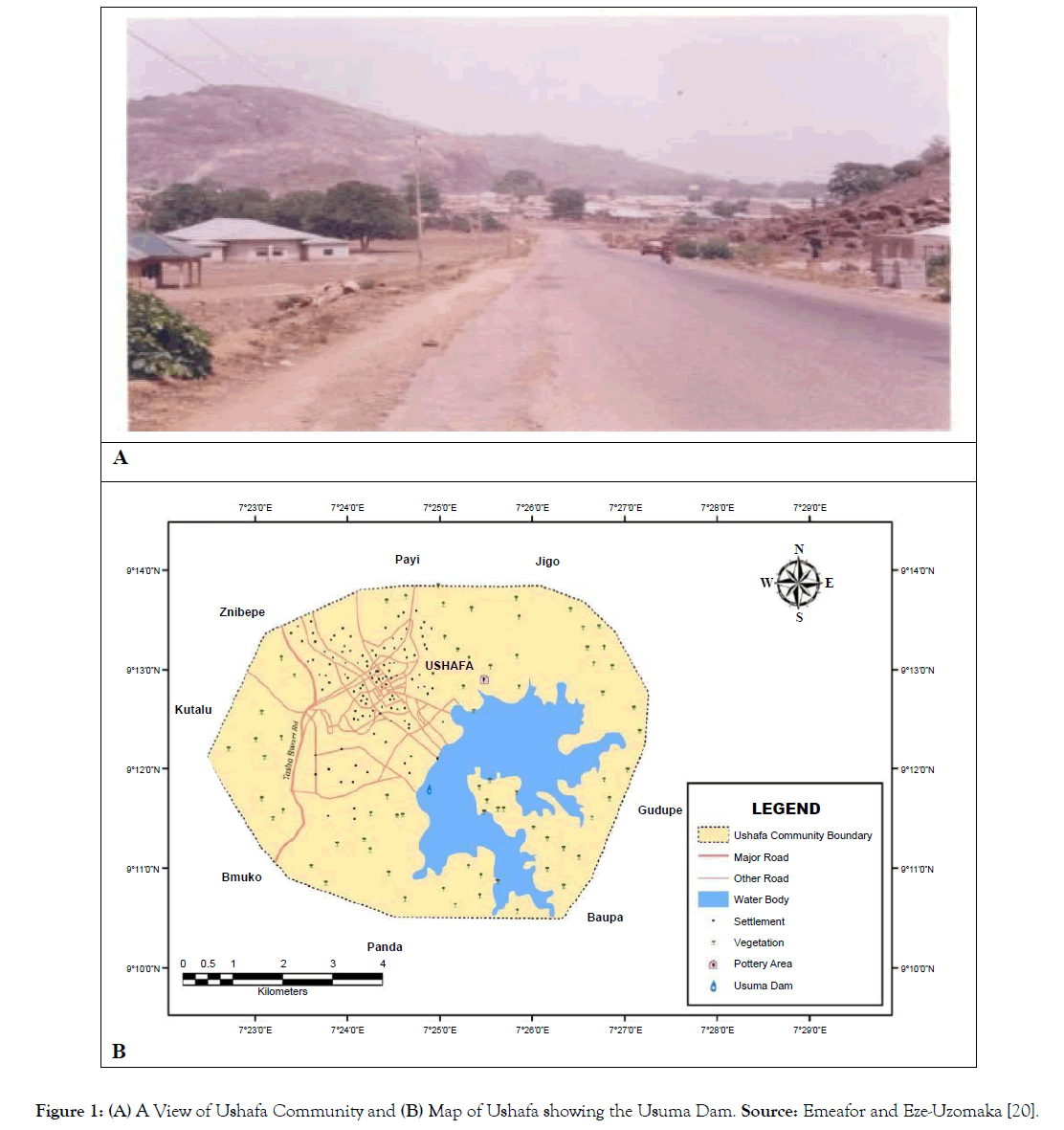
Figure 1: (A) A View of Ushafa Community and (B) Map of Ushafa showing the Usuma Dam. Source: Emeafor and Eze-Uzomaka [20].
To achieve the objectives of this study, the survey research design which allows for representative samples in the collection of data was adopted. Primary and secondary sources of data were relied on in the course of the research. Secondary sources of information were sourced from related literature, whereas primary data were sourced through questionnaire and studio practice. Respondents who participated in the research were persons aged 20 and above drawn from the area of study which is Ushafa community.
Sample size of 150 was drawn using the Survey Software Calculator, which is ideal for infinite population with the help of 2006 delineation enumeration areas as a frame work. Systematic random sampling technique was used in order to enable the successful distribution of questionnaire to 150 respondents who are resident in the area. Systematic random sampling implies the selection of samples based on a system of intervals in an ascertained population. Here, research questionnaires are administered to every fourth resident in contact. The fact that questionnaire where administered to every fourth person in the population is what makes the sampling systematic, on account of the interval considered. The systematic random sampling technique is preferred for its allowance of the researcher to add a degree of system or process into the random selection of subjects [9].
The study also involved studio practice. This was done for purposes of practical demonstration of the production processes involved in pottery production. Graphic, tabular and mean average calculation method was used in order to make presentation more empirical and comprehensible, thereby curbing potential loss of both the qualitative and quantitative data from the study [9].
Studio practice on the other hand involved practical clay prospecting, testing, material preparation and production of wares.
Clay prospecting, otherwise known as “looking for clay”, entails a search, a field test and a studio test. Sources of clay, known scientifically as feldspar include, rivers, from surface collection, or is deliberately mined. This can be done on building sites or construction environment. Its chemical formulae are represented as: Al2O3.2SiO2.2H2O. (Figure 2A) [20].
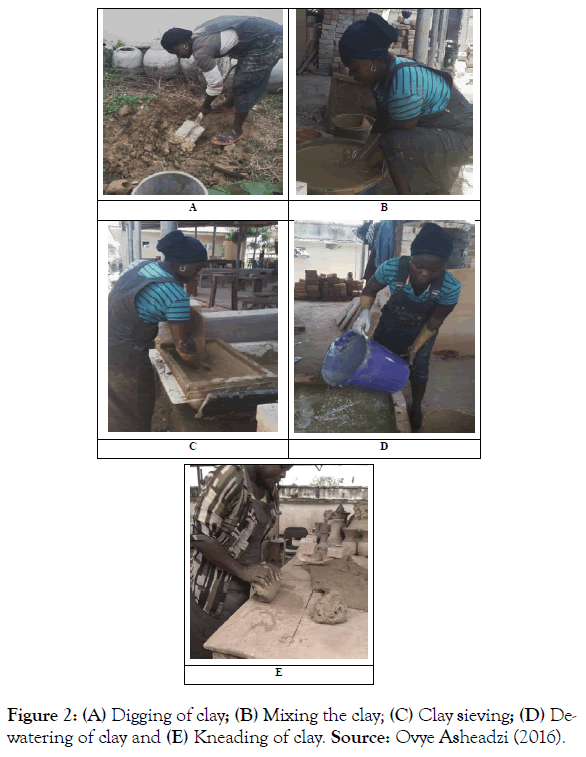
Figure 2: (A) Digging of clay; (B) Mixing the clay; (C) Clay sieving; (D) Dewatering of clay and (E) Kneading of clay. Source: Ovye Asheadzi (2016).
Field tests will inform the potter of the usefulness or otherwise of the clay suspect. This is done by the use of a pencil diametersized coil wrapped around the index or middle finger which gives information about the level of plasticity or otherwise of the suspected clay.
Body formulation calls for some characteristics of clay which the researcher may desire. Such may include plasticity, colour, maturing temperature, and grain size. For our study, moderate plasticity was required. The following tools and machinery were used in the course of the research. They include Manual throwing wheel, Spatula, Spoon, Smooth stone, Cutter, Comb, Calipers, Foam, Kiln, Mesh, Shovel, Kidney, Perforator, Waterproof bag, Drum and Elbow Ruler.
Clay preparation is done prior to production in order to provide a workable clay mass which will make the production and exploration of planters easier. After the location of the clay deposits, the clay was dug from the deposit site, spread to sundry and slaked for a minimum of three (3) days; it was stirred and sieved with a mesh of 600 mm to remove impurities. It was left to set, decanted and dewatered. This was done in porous platform arranged using red bricks. The essence of this was to get rid of excess water and this resulted in the formation of clay cakes which was kneaded in the right making consistency (Figure 2B-2E).
Modern pottery ware products
Different techniques and method are adopted in the production of modern pottery ware. These may involve the use of hand-building, pinching, throwing, coiling, and slab method. With the inspiration from forms in the natural environment such as leaves form, snail shells and brick pattern in exploring unique and interesting shapes and designs of planters, wall decoration and flower vase should be produced depending on the potter’s inspiration. Every production first comes with a sketch (Figure 3A-3C).
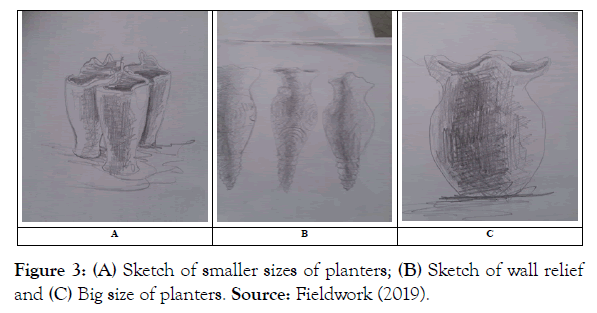
Figure 3: (A) Sketch of smaller sizes of planters; (B) Sketch of wall relief and (C) Big size of planters. Source: Fieldwork (2019).
Production processes
Throwing and hand building methods were adopted in the production of the flower planters. The planters were thrown in different segments, joined, and further explored in unique and interesting manner. The inspiration was got from the natural environment. Leaf shapes were explored in the planters, coils were rolled and use to sculpt the feature of leaves on the planters produced. Adequate finishing was applied through burning. Samples of finished works are usually on display at the gallery for tourists and other consumers (Figure 4A-4H).
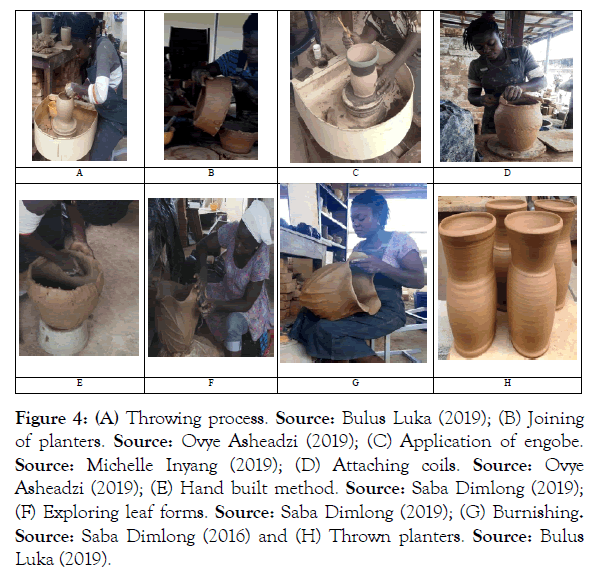
Figure 4: (A) Throwing process. Source: Bulus Luka (2019); (B) Joining of planters. Source: Ovye Asheadzi (2019); (C) Application of engobe. Source: Michelle Inyang (2019); (D) Attaching coils. Source: Ovye Asheadzi (2019); (E) Hand built method. Source: Saba Dimlong (2019); (F) Exploring leaf forms. Source: Saba Dimlong (2019); (G) Burnishing. Source: Saba Dimlong (2016) and (H) Thrown planters. Source: Bulus Luka (2019).
Analysis of data as collated from the field is organized, presented analyzed and interpreted here. Multivariate analyses are done using tables, charts and graphs in the demographics of respondents to distributed questionnaire
Results from the field as presented in the chart shows that 38 constituting 27% of the respondents indicated that they were between the ages of 20-24 years (Figure 5). Those within the age bracket of 25-30 years were 3434 constituting 24%, while the age category of the 31-34 years were 29, representing 20% of the respondents. The aggregate is therefore 101 representing 71%. This therefore makes the research youth-centered. On sex demography of the respondents, 85 representing 60% of the respondents were females while 57 representing 40% were males. It therefore means that female respondents where more. Majority of the respondents were still single. They were 98, representing 69% of the respondents. 44 representing 30% of respondents were married. Data from the field shows that 108 representing 30% of the respondents were Christians whereas those who profess Islam totaled 34 representing 23.9% of the respondents. The unemployed had the highest percentage with 56 representing 39.4% of the respondents. The employed, both in private and public sectors were 54 representing 34% of the respondents and 32 representing 22.5%, respectively.
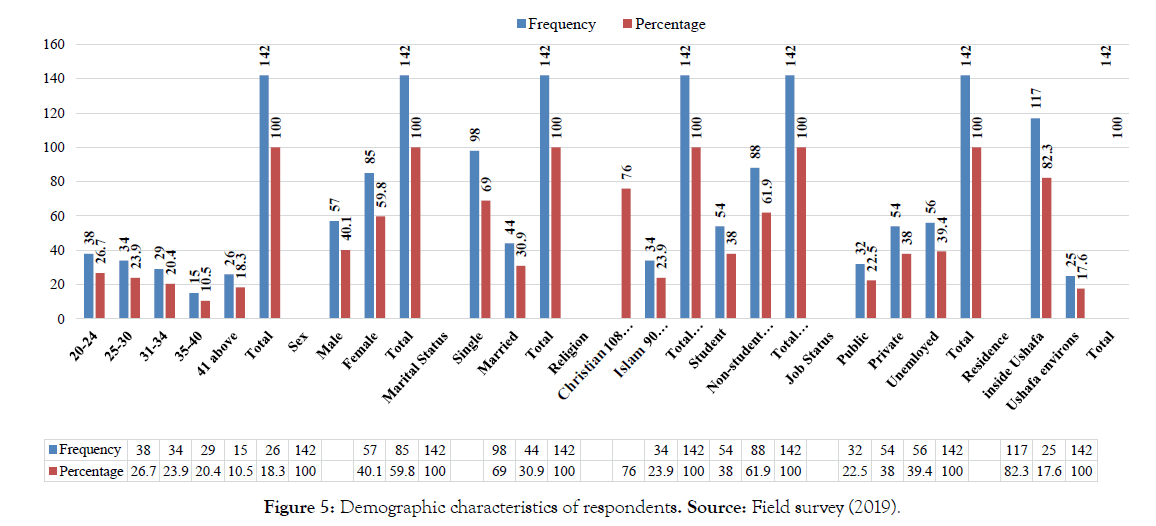
Figure 5: Demographic characteristics of respondents. Source: Field survey (2019).
Data on residence shows 117 representing 82.3% indicated they were resident inside Ushafa community. Those who indicated they live outside of Ushafa were 25 representing 17.6%. From the responses, it is clear that the unmarried, unemployed Christian population dominated Ushafa community and environs. Employment opportunity and economic survival by the youth could be the reasons for it.
In Tables 1 and 2, four-point Likert Scale questionnaire was used to elicit data from the field. Responses on the questionnaire are categorized thus: A=Agreed, SA=Strongly Agreed, D=Disagreed and SD=Strongly Disagreed, respectively. Table 1 is data on contribution of pottery craftmanship to economic empowerment in Ushafa.
Table 1: Contribution of pottery craftmanship to economic empowerment in Ushafa.
| Responses | Response pattern | |||
|---|---|---|---|---|
| A | SA | D | SD | |
| Generate employment | 54 | 52 | 19 | 17 |
| Source of income earning to potters | 52 | 60 | 17 | 13 |
| Attracts tourists to Ushafa | 50 | 52 | 21 | 20 |
| Improved standard of living | 49 | 51 | 21 | 19 |
| Increased market availability of modern pottery ware | 55 | 56 | 21 | 10 |
Source: Field survey, 2019.
Table 2: Crime control through pottery craftmanship in Ushafa community.
| Responses | Response pattern | |||
|---|---|---|---|---|
| A | SA | D | SD | |
| Engages more youth in productive activities | 61 | 45 | 19 | 17 |
| Less time is available for criminal association by youth | 49 | 47 | 24 | 22 |
| Breads healthy competition rather than rivalry among youth | 50 | 44 | 18 | 28 |
| Takes most youth off drugs | 47 | 51 | 22 | 22 |
| Leads to reduced crime rate | 63 | 46 | 15 | 18 |
Source: Field survey, 2019.
Responses from the respondents shows 54 agreed that the contribution of pottery craftmanship to economic empowerment in Ushafa generate employment. 52 strongly agreed, 19 disagreed and 17 strongly disagreed. It therefor shows that pottery craftmanship helps in generating employment. Data on the source of income earning to potters shows that 52 agreed, 60 strongly agreed, 17 disagreed, and 13 strongly disagreed.
Majority of the respondents therefore strongly agreed that pottery craftmanship is a source of income earning to potters. Data on whether a contribution of pottery craftmanship to economic empowerment in Ushafa indicate that 50 respondents agreed, 52 strongly agreed, 21 disagreed and 20 strongly disagreed. From the analysis of data, it therefore means a contribution of pottery craftmanship to economic empowerment in Ushafa is in the area of its attraction of tourists to Ushafa.
Table 1 also collated data on whether a contribution of pottery craftmanship to economic empowerment in Ushafa is improved standard of living. Data shows 49 respondents agreed, 51 strongly agreed, 21 disagreed and 19 strongly disagreed. From the data therefore, pottery craftmanship has improved standard of living of the Ushafa people with majority strongly agreeing. On increased market availability of modern pottery ware, 55 respondents agreed, 51 strongly agreed, 21 disagreed, and 10 strongly disagreed. Majority of the respondents therefore are of the opinion that pottery craftmanship has strongly increased market availability of modern pottery ware.
Table 2 is data on crime control through pottery craftmanship in Ushafa community. Data from the Table 2 shows that 61 respondents agreed to the fact that an area of crime control through pottery is that it engages more youth in productive activities. 45 respondents agreed, 19 disagreed and 17 strongly disagreed with it. On whether crime control through pottery craftmanship is through less time available for criminal association by youth, 49 respondents agreed, 47 strongly agreed, 24 disagreed and 22 strongly disagreed. Similarly, 50 respondents agreed, 44 strongly agreed, 18 disagreed and 28 strongly disagreed to the question that it breeds healthy competition rather than rivalry among youth. Moreover, 47 respondents agreed, 51 strongly agreed, 22 disagreed and 22 strongly disagreed to the question that it takes most youth off drugs. Lastly, 63 respondents agreed, 46 strongly agreed, 15 disagreed and 18 strongly disagreed to the question on whether pottery craftmanship leads to reduced crime rate.
The information collated in the Tables 1 and 2 are further analyzed using clustered column (Figures 6 and 7). By means of descriptive statistics, the data from the field were further analyzed which enabled the study to find out the mean and standard deviation of the variables in the research (Table 3). From the analysis, results of data indicate that respondents’ opinion on the contribution of pottery craftmanship to economic empowerment in Ushafa community (Table 2) show the following mean and standard deviation. Generate employment (=1.99, SD=.99998); Source of income earning to potters (x= 1.93, SD = .92418); Attracts tourists to Ushafa (x=2.06, SD=1.01907); Improved standard of living (x=2.07, SD=1.01512); Increased market availability of modern pottery ware (x=1.90, SD=.90161).
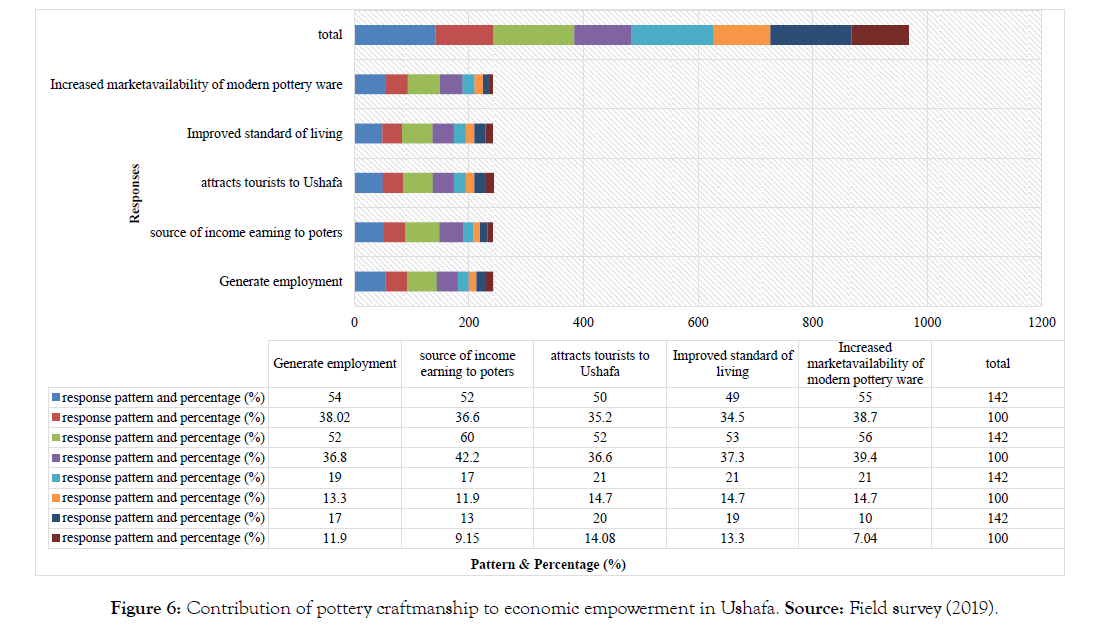
Figure 6: Contribution of pottery craftmanship to economic empowerment in Ushafa. Source: Field survey (2019).
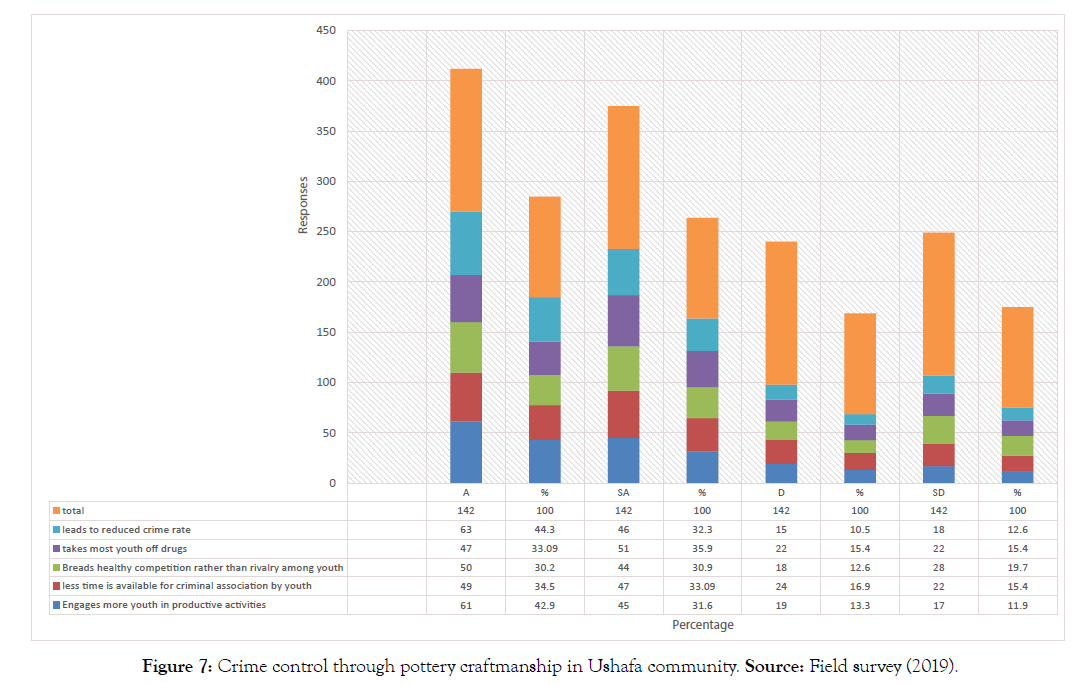
Figure 7: Crime control through pottery craftmanship in Ushafa community. Source: Field survey (2019).
Table 3: Descriptive statistics.
| Mean | SD | N | |
|---|---|---|---|
| Age | 2.6972 | 1.43902 | 142 |
| Gender | 1.5986 | .49192 | 142 |
| Marital status | 1.3099 | .46407 | 142 |
| Religion | 1.239 | .4283 | 142 |
| Educational status | 1.6197 | .48717 | 142 |
| Job status | 2.1690 | .77159 | 142 |
| Residence | 1.1761 | .38222 | 142 |
| Generate employment | 1.9930 | .99998 | 142 |
| Source of income earning to potters | 1.9366 | .92418 | 142 |
| Attracts tourists to Ushafa | 2.0634 | 1.01907 | 142 |
| Improve standard of living | 2.0704 | 1.01512 | 142 |
| Increase market availability of modern pottery ware | 1.9014 | .90161 | 142 |
| Engages more youth in productive activities | 1.9437 | 1.02296 | 142 |
| Less time is available for criminal association by youth | 2.1338 | 1.06010 | 142 |
| Breads healthy competition rather than rivalry among youth | 2.1972 | 1.13762 | 142 |
| Takes most youth off drugs | 2.1338 | 1.04664 | 142 |
| Leads to reduced crime rate | 1.9155 | 1.02793 | 142 |
Source: Field survey, 2019.
Also, results of the question on crime control through pottery craftmanship in Ushafa community show on Table 3 that the mean and standard deviation derived is as follows: Engages more youth in productive activities (x=1.94, SD=1.02296); Less time is available for criminal association by youth (x=2.13, SD=1.06010); Breads healthy competition rather than rivalry among youth (x=2.19, SD=1.13762); Takes most youth off drugs (x=2.13, SD=1.04664) and Leads to reduced crime rate (x=1.91, SD=1.02793).
This study was carried out with a view to establishing the nexus between creative employment and curbing youth criminality, using a structured questionnaire. Respondents to questionnaire items affirmed that craftmanship in pottery production can significantly curb youth criminality in Ushafa community. The study findings revealed that craftmanship in pottery does generate employment for the teeming youth of Ushafa who daily troop to the area in search of job/employment opportunities. Also, respondents believe that those who find pottery making as a source of income generation benefit maximally from their art, which in turn improves their standard of living.
Analyzed data from the study show a correlation between age, gender and employment. Many of the respondents were youth (71%) and the female gender, among them were 59.8%. However, those engaged in private (small scale) employment and those not employed at all totaled 77.4%. It would not be out of place to conclude that much of the crime statistics which point to youth involvement could be a result of their unemployment status. This study makes it imperative for greater attention to be paid to youth employment through pottery craftmanship. It is understandable why most of the respondents were females, this is on account of the fact that the pottery making business is traditionally viewed as a female-gender role [24]. Furthermore, the study revealed that a higher percentage of respondents were non-students (61.9%). This shows that pottery craftmanship can actually absorb not only school leavers, but a wider segment of the Ushafa population who are willing to take pottery art as a means of livelihood. The multiplier effect this has on the Ushafa community and environs is that as more youth are engaged in productive activities, less time is available for their participation in criminal association. When this is achieved, youth drug addiction is curtailed and ultimately reduction in crime perpetuation is recorded. Crime reduction is possible when fewer and fewer youth are left to wonder on the streets, as more and more are engaged in productive ventures in the pottery industry. On the strength of the identified theories, it could be subsumed that the basic assumptions of the two theories squarely justified the study Travis Hirschi in his theory of innovation clearly pointed out that the basic control mechanisms of society are attachment, commitment, involvement and belief. These the theorist note that help to pull the individuals in society to desired social functioning. On the other hand, Schumpeter, using his theory of innovation had opined that only the departure from the very known through inculcation of new ideas to the very new, can development be said to have taken place. A critical beam on the two theories as they guide this study reveals that indeed crime in society can be checked when deliberate attention is paid to strategies of engaging the youth in productive activities, especially those that may not necessarily require huge start-up capital.
The study attempts an examination of the possibility of curbing youth criminality through creative employment with a focus on Ushafa pottery Centre. Some salient conclusions have been drawn therefrom, which bother on the possibility of effectiveness of crime rate being reduced if the stake holders pay attention to inculcating pottery craftmanship in the Ushafa youth. Emeafor and Eze- Uzomaka [20] argued that for the sub-Saharan African countries to match up with their developmental aspirations, deliberate steps must be taking to reassess the traditional technology, enhance it into a viable alternative to production. It is true from this study that no viable development can be said to take place where there is the preponderance of crime rate. It is here concluded that craftmanship in pottery by the Ushafa youth would not only ensure reduced crime rate, but would serve as a source of employment to the teaming youth population, which observers say was responsible for youth criminality.
It is high time greater attention is deliberately shifted to youth creative empowerment in order to curb the menace of youth criminality. The combined avalanche of young school leavers and youth unemployment makes it imperative for the government and other stakeholders to evolve new approaches to engage this teaming population. This is in view of it posing a threat to public safety, security and freedom of movement to law-abiding citizens.
From the benefit of the study, it is observed that the economic fortune of the potters is positively affected, as well as their standard of living. We recommend that the Ushafa Pottery Centre be upgraded to maximally affect the community. It is also recommended that increased awareness be mounted so as to enable more people access to the benefit which the pottery Centre can offer.
The study also revealed that as more youth find engagement in the art of pottery production, fewer incidences of criminal attacks are recorded in the Ushafa area. Thus, we recommend that policies and programmes of work engagement should be developed for youth participation so the multiplier effect can be felt in crime reduction amongst others.
There is consensus on the tripartite relationship between population, unemployment and criminality [9,20]. As the population of Ushafa increases for economic reasons, it comes with the burden of unemployment, which in time leads to criminality. This study calls for development and expansion of creative industries within Ushafa and environs which can absorb the teaming numbers of youth. Once more youth population is gainfully engaged, this study believes petty crimes may just fizzle out and serious criminal hideouts would be busted.
Citation: Inyang MN, Inyang MF (2019) Curbing Youth Criminality through Creative Employment: Ushafa Pottery Centre Abuja in Focus. Social and Crimonol 7:201. doi:10.35248/2375-4435.19.7.201
Received: 20-Mar-2019 Accepted: 04-Apr-2019 Published: 11-Apr-2019 , DOI: 10.35248/2375-4435.19.7.201
Copyright: © 2019 Inyang MN, et al. This is an open-access article distributed under the terms of the Creative Commons Attribution License, which permits unrestricted use, distribution, and reproduction in any medium, provided the original author and source are credited.